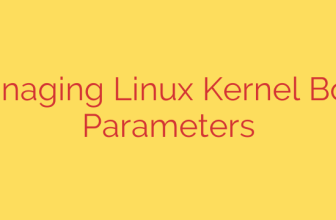
Unleash Your Novel: The Best Free Writing Software for Linux
For authors who choose the power and flexibility of Linux, finding the right creative tools can sometimes feel like a quest. While the platform is a powerhouse for developers and system administrators, many believe it lacks the polished, dedicated software available for writing a novel. Fortunately, that couldn’t be further from the truth. The open-source community has built an incredible ecosystem of free, powerful applications designed specifically for writers.
Whether you’re a meticulous planner who outlines every plot point or a “pantser” who dives straight into the draft, there’s a perfect Linux tool for you. This guide explores the best free software to take your story from a spark of an idea to a fully formatted manuscript, ready for publication.
All-in-One Novel Writing Studios
These applications are designed to be your complete project management hub, helping you organize notes, characters, chapters, and research all in one place. They are the strongest open-source alternatives to popular proprietary software like Scrivener.
Manuskript: A premier tool for novelists who love structure. Manuskript is built around the “snowflake method,” allowing you to start with a single idea and incrementally add detail to your characters, plot, and world. Its key features include a hierarchical chapter organizer, character and plot development tools, a distraction-free writing mode, and frequency analysis to track overused words. It’s perfect for writers who want to see the big picture and the fine details simultaneously.
Bibisco: If your stories are driven by rich, complex characters, Bibisco is for you. This software places a heavy emphasis on character development. It provides detailed questionnaires to help you flesh out your characters’ personalities, motivations, and backstories. Bibisco excels at creating relationship diagrams, tracking character appearances across scenes, and analyzing your story’s timeline and locations. It helps you understand the heart of your novel: the people within it.
Distraction-Free and Markdown Editors
When it’s time to get words on the page, distractions are the enemy. These minimalist editors are designed to help you focus on one thing only: writing.
FocusWriter: The name says it all. FocusWriter provides a simple, full-screen writing environment that hides away your desktop and all other applications. It features a clean, themeable interface (you can make it look like a blank sheet of paper), daily goal tracking, timers, and optional typewriter sound effects. It’s the ideal tool for focused drafting sessions where word count is your primary goal.
ghostwriter: For those who appreciate the simplicity and power of Markdown, ghostwriter is a top-tier choice. It offers a clean writing space with a live HTML preview so you can see your formatting as you type. Its standout features include a focus mode that highlights the current sentence or paragraph, built-in themes, and robust export options to HTML, Word, and PDF. It strikes a perfect balance between minimalist design and powerful features.
Planning, Outlining, and World-Building
Before you write the first chapter, you need a plan. These tools are designed for brainstorming, outlining, and managing the complex lore of your fictional universe.
Zim Desktop Wiki: Imagine having a private Wikipedia just for your novel. That’s Zim. It allows you to create a network of interlinked pages for characters, locations, historical events, and magical systems. Its strength lies in its ability to quickly create links between pages, helping you organize and navigate complex worlds. For fantasy and science fiction authors managing immense amounts of information, Zim is an indispensable world-building companion.
Freeplane: This is a powerful and flexible mind-mapping tool. A mind map is a perfect way to visually brainstorm plot points, explore character relationships, or structure the flow of your novel. Freeplane allows you to create complex, non-linear outlines with nodes, connectors, and notes, giving you a bird’s-eye view of your entire story structure. It’s an excellent first step before you start writing prose.
The Traditional Word Processor
Sometimes, you just need a reliable, feature-rich word processor that can handle any formatting task you throw at it.
- LibreOffice Writer: As the flagship open-source alternative to Microsoft Word, LibreOffice Writer is a true workhorse. It can do everything you need for final manuscript preparation. It offers extensive formatting options, templates for standard manuscript submission, a robust spell and grammar checker, and excellent compatibility with .doc and .docx files. When it’s time to format your novel for agents or publishers, this is the tool you’ll need.
Specialized and Publishing Tools
From screenplays to ebooks, these specialized tools handle the final stages of the writing and publishing journey.
Trelby: If you’re a screenwriter, Trelby is a must-have. It is a free, dedicated screenwriting application that takes care of all the industry-standard formatting for you. It properly formats scenes, action, dialogue, and transitions, and includes features like character reporting and scene management. It lets you focus on the story, not the formatting rules.
Sigil & Calibre: This duo is essential for any author planning to self-publish ebooks. Sigil is a powerful EPUB editor that gives you direct control over the code of your ebook, allowing for professional-grade formatting and clean-up. Calibre is the ultimate ebook management library; it can convert your manuscript into dozens of formats (including .mobi for Kindle), edit metadata, and manage your entire digital library. Together, they provide a complete, free workflow for producing and managing professional ebooks.
Building Your Perfect Open-Source Writing Workflow
The real power of using Linux for writing is the ability to combine these tools to create a custom workflow that fits your style. You aren’t locked into a single ecosystem.
- Brainstorm & Outline: Start with Freeplane to map out your core plot and character arcs.
- Organize & Draft: Move your outline into Manuskript or Bibisco to organize your chapters and write your first draft in a structured environment. Use FocusWriter for intense, distraction-free drafting sessions.
- Edit & Format: Export your completed draft and bring it into LibreOffice Writer for detailed editing, proofreading, and standard manuscript formatting.
- Publish: Use Sigil to convert your final manuscript into a clean EPUB file, and manage all your ebook formats with Calibre.
By leveraging these powerful and free tools, Linux users can build a writing environment that is not only cost-effective but also incredibly flexible and tailored to their creative process. The open-source world has provided everything you need—now go write that story.
Source: https://www.linuxlinks.com/novelists/








